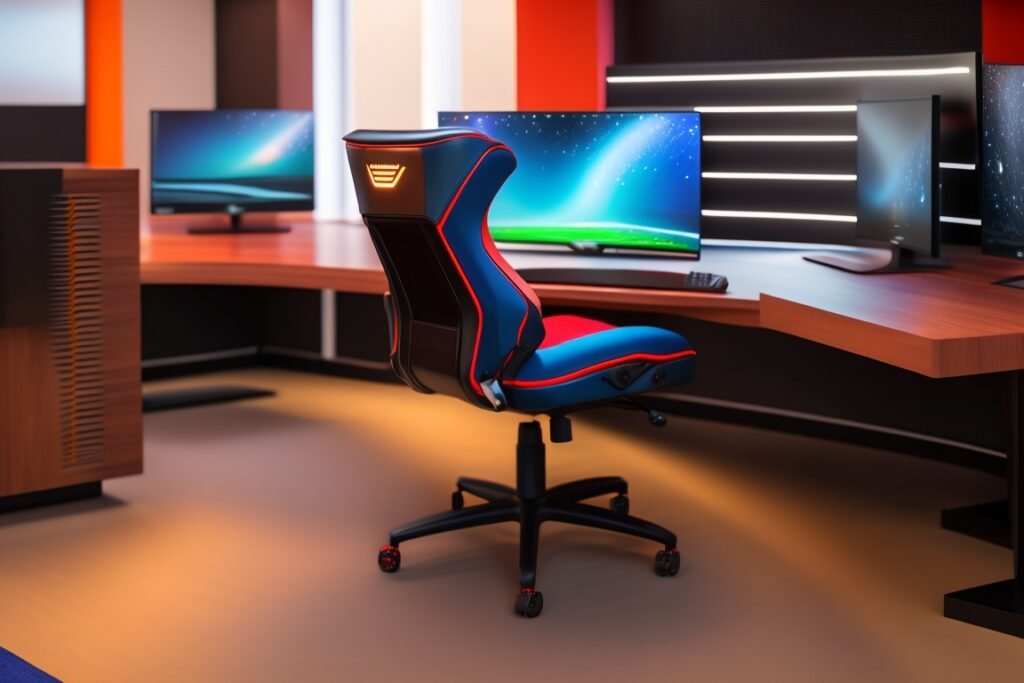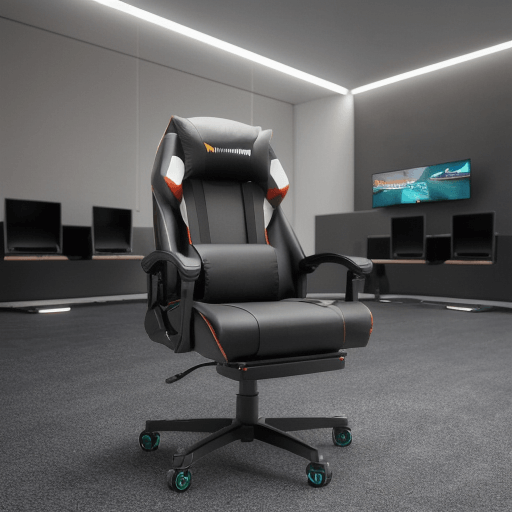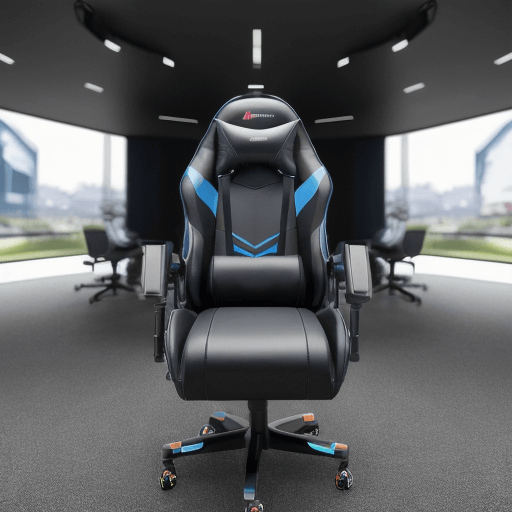The debate between faux leather and cushioned seats is an age-old one that has captivated the minds of consumer product experts for decades. With advancements in technology and materials, there are now more options than ever before to choose from when selecting furniture or car seats.

As such, it can be difficult to determine which option best suits a particular user’s needs. This article will explore brand preferences and what type of seating material is best suited for different types of users. It will delve into the pros and cons of each seat type, as well as analyze various factors that should be taken into consideration when making this decision.
Ultimately, readers will walk away with the knowledge necessary to make an informed choice regarding their own seating preferences.
Overview Of Seat Types
When it comes to choosing the right seat for a car, there are two main types available: faux leather and cushioned seats. Both options offer unique features that may appeal to different users based on their preferences and needs.
Faux leather seats are usually made from synthetic materials such as polyurethane or vinyl, which can be treated with conditioning agents to improve durability and water resistance. These lightweight materials also make them easy to install, offering a low-cost option for those looking for an affordable solution. Additionally, they require minimal maintenance and can easily be wiped clean when needed.
Cushioned seating typically offers more support than other types of upholstery due its soft padding layers that absorb shock and reduce pressure points in the body over time. The material used is often breathable fabric that allows air circulation throughout the seat. Furthermore, these materials tend to last longer than faux leather if cared for properly. As such, they might be worth considering by those who value long-term comfort level above all else.
With both options being viable solutions depending on individual circumstances, careful consideration should be given before making any purchase decisions. Moving forward we will discuss some of the advantages of opting for faux leather seating…
Advantages Of Faux Leather
When it comes to seating materials, faux leather and cushioned seats are two of the most popular choices. Both offer distinct advantages over other types of seats in terms of comfort, affordability, durability, and style.
However, there is no one-size-fits-all solution when it comes to choosing between these two seat types since each has its own unique set of pros and cons that must be weighed carefully by consumers before making a purchase decision.
Faux leather offers an excellent combination of affordability and style. This material looks like genuine leather but costs significantly less than real hide while still providing a stylish look for any room or office space. Faux leather is also highly durable; with proper maintenance this material can last years longer than traditional fabric upholstery. On the downside, faux leather does not provide as much cushioning compared to some more comfortable fabrics such as velvet or suede.
Cushioned seats on the other hand offer superior comfort levels thanks to their soft padding which provides ample support during extended periods of sitting down. Additionally, cushioned seats come in a variety of colors and patterns so users can easily find something that suits their individual tastes and preferences in terms of interior design aesthetics. While they tend to cost more upfront than faux leather options due to their higher quality materials, cushioned seats may ultimately prove cheaper in the long run as they require little maintenance aside from occasional dusting or vacuuming depending on how frequently people use them.
Ultimately, it is important for consumers to take into consideration both factors such as durability versus comfort and affordability versus style when selecting either faux leather or cushioned seating solutions for their homes or offices. By doing so they will ensure that whatever choice they make best fits their needs while remaining within budget constraints if necessary.
Disadvantages Of Faux Leather
As a consumer product expert, I’m often asked about the relative merits of faux leather and cushioned seats. The truth is that there are advantages and disadvantages to both types of seating materials.
To start, let’s take an in-depth look at some of the drawbacks associated with faux leather. One issue frequently raised by users is durability – especially when it comes to temperature control. Faux leather can easily become damaged by extreme temperatures, leading to cracking or fading over time. This means that if you live in an area where the climate fluctuates drastically between seasons, your faux leather seat may not last as long as other options might.
It’s also worth considering how much maintenance is required for these kinds of products; regular cleaning (and even repainting) can be necessary to keep them looking their best. Another concern related to faux leather is its susceptibility to staining and odors. Because this material does not breathe very well, any liquids spilled on it will quickly seep into the fabric and cause permanent damage unless they’re cleaned up immediately. Similarly, strong smells like smoke or pet dander may linger longer than expected when trapped within such a nonporous surface.
Taking all of these factors into account, one should carefully consider their lifestyle before investing in a faux leather seat cover or cushioning option for their home furnishings.
These potential pitfalls aside, many people find that faux leather still offers an attractive solution due to its cost effectiveness and relatively low upkeep requirements compared with more traditional upholstery fabrics. As we move into discussing the advantages of cushioned seats, however, it becomes clear that this type of material has much more versatility than its synthetic counterpart…
Advantages Of Cushioned Seats
Cushioned seats are increasingly becoming a popular choice among consumers, as they offer comfort and support without the cost of traditional leather upholstery.
Cushioning is generally available in a variety of fabrics, including vinyl and polyester micro-fibers, allowing for customizable seating solutions that can suit any user’s needs and preferences.
Additionally, cushioned seats may provide significant cost savings compared to other types of upholstery materials, making them an economically sound choice when considering furniture options.
When it comes to environmental impact, cushioned seats also have many advantages over other types of seat material.
Many cushioning materials are composed of recycled PET or polyester fibers which require fewer natural resources than leather to produce.
Furthermore, because most cushioning materials are more durable than leather or fabric alternatives, they often last longer and need less frequent replacement – reducing the overall waste generated by consumer products.
In addition to providing financial benefits and having a lower environmental footprint than other materials, cushioned seats can be easy to maintain with regular cleaning and vacuuming.
This makes them ideal for busy households where time spent on upkeep might otherwise become an obstacle to enjoying comfortable seating surfaces.
Taking into account all these factors, cushioned seats present a viable option for those looking for affordable yet comfortable seating solutions that will not break their budget or negatively impact the environment.
Moving forward with this knowledge we can now consider the disadvantages associated with using cushioned seats for furniture applications.
Disadvantages Of Cushioned Seats
Cushioned seats have many advantages but there are some disadvantages to consider as well.
Durability issues can be a major concern when it comes to cushioned seating. High traffic areas, such as restaurants or office waiting rooms, will experience faster wear and tear on the cushioning material than in other settings.
In addition, cleaning challenges may arise with certain materials that make up the cushioning of a seat. Materials such as polyurethane foam tend to absorb moisture, which makes them susceptible to mold growth from spilled liquid or sweat over time.
When choosing between faux leather and cushioned seats for any particular application, durability should be taken into consideration along with comfort levels. Faux leather is known for its ability to withstand daily use; however, if a more comfortable option is desired then one must balance this factor against potential durability concerns associated with cushioned seating options.
Cleaning considerations should also be made depending on how often spills occur in the environment where these seats will be used. Polyester fabric is fairly easy to clean while genuine leather might require additional care when it comes to keeping it looking good over time.
The type of seat chosen depends on personal preferences combined with specific needs related to the environment they’ll occupy. Comfort level plays an important role in selecting a suitable seat, but factors like cost and maintenance requirements should also be considered before making a decision about what kind of seating will best suit individual’s needs and tastes.
Factors To Consider When Choosing
When it comes to faux leather or cushioned seats, there are many factors that should be considered when making a selection.
Firstly, the buyer must determine their preferences regarding style trends and color selection. Taking into account current fashion trends can help guide buyers in choosing a seat with an aesthetically pleasing design that will fit nicely into their home decor. Furthermore, taking note of colors used in furniture and other items throughout the room can aid buyers in selecting a piece that complements existing furnishings.
In addition to aesthetics, buyers should also factor in comfort levels when selecting between faux leather or cushioned seats. Considerations such as firmness of padding, size of seating area, and overall weight should all be taken into account so that users can find pieces which provide adequate support and cushioning for prolonged sitting sessions over extended periods of time. It is important to research product specifications prior to purchase in order to make sure one’s chosen item meets expectations for both form and function.
The final consideration before deciding on a particular model is the cost associated with purchasing either type of seating option. Buyers may wish to compare different models within their budget range so they can choose wisely while still maintaining financial stability. Additionally, potential buyers should check if any discounts or promotional offers are available at retailers from whom they intend to purchase goods; this could drastically reduce costs depending on individual circumstances.
With these considerations in mind, consumers will be better equipped to select the best seat for them – whether it be faux leather or cushioned – based on personal preference and lifestyle needs.
Brand Preferences
When it comes to faux leather or cushioned seats, one of the major deciding factors for consumers is brand reputation.
For example, many car owners prefer Ford vehicles because they have a higher resale value and are known for their robustness. However, there are also other brands such as Chrysler and Toyota that offer similar levels of comfort and durability at a lower price point.
Therefore, when choosing between these two types of seating options, buyers should take into consideration not only the pricing structure but also the brand’s reputation in terms of quality and customer service.
In addition to brand reputation, another important factor to consider when selecting faux leather or cushioned seats is product availability.
Consumers need to ensure that the seat they purchase has adequate stock in order to avoid any delays in installation or delivery. Many manufacturers offer online ordering platforms which make it easier for customers to compare prices and check product availability before making a purchase decision.
Furthermore, buyers should pay close attention to warranties offered by different suppliers as this can be an indication of how long-lasting the product will be after use.
Some companies may provide extended warranty coverage on certain products while others may restrict coverage on certain items due to age or wear and tear considerations. It is therefore essential for shoppers to read the fine print before proceeding with a purchase so they can get the best deal possible without compromising on quality or longevity of their chosen option.
With careful research and comparison shopping, users can find the right seat that meets both their financial needs as well as providing them with optimum comfort and safety features.
What Suits Users Best?
When it comes to brand preferences in faux leather or cushioned seats, there are many important factors to consider. Durability is of utmost importance as the seat will be used on a regular basis and must withstand wear and tear over time. Cost comparison between brands can also have an effect on consumer preference, with some being more expensive than others but providing higher quality products that may last longer.
A key factor when determining which type of seat suits users best is the trade off between comfort and durability. Faux leather offers a sleek aesthetic, however they may not be as comfortable for long periods of time as other materials such as fabric or cushioning would be. On the other hand, cushioned seats offer increased levels of comfort but may not provide the same level of durability due to their soft nature.
In order to determine which type of seat works best for consumers’ needs, it’s important to think about:
- How often will the seat be used?
- What kind of environmental conditions will it be subject too?
- Is budget a major consideration?
By taking into account these three points along with comparing cost and durability tradeoffs, consumers can make informed decisions regarding what type of seat works for them best.

Frequently Asked Questions
What Kind Of Maintenance Is Required For Faux Leather Or Cushioned Seats?
An age-old debate remains: faux leather or cushioned seats? In terms of durability comparison and cleaning tips, it pays to explore what kind of maintenance is required for either option.
For the discerning consumer product expert/analyst, this can be a daunting task; however, with knowledge comes power – and in turn mastery over one’s own home furnishing decisions!
In general, faux leather seating requires periodic wiping down with a damp cloth to remove dust particles and any spills that may have occurred.
Cushion seats are also relatively easy to clean but must be vacuumed on occasion to prevent dirt from getting trapped within the fibers.
Additionally, both materials need conditioning treatments at least once per year to maintain their quality.
With these simple yet essential steps in mind, consumers can rest assured that whichever seat they choose will remain pristine for years to come.
How Long Do Faux Leather And Cushioned Seats Last?
A key factor to consider when evaluating the durability of faux leather and cushioned seats is proper upholstery care.
Faux leather requires regular cleaning with a damp cloth or sponge, as well as conditioning every 3-6 months depending on usage.
Cushioned seats require more frequent maintenance such as vacuuming weekly, spot treating spills immediately, and replacing covers periodically.
By following these steps for both materials, users can expect their seating material to last an average of five years or more.
Are Cushioned Seats Comfortable For Long Periods Of Sitting?
Cushioned seats have become a staple of modern furniture design, offering unparalleled comfort and ergonomic support for long periods of sitting.
From premium brands to budget-friendly options, the market continues to expand with more choices in materials and cushioning designs.
While faux leather may provide more durability over time, cushioned seating is renowned for its superior level of comfort.
Manufacturers are increasingly paying attention to seat durability as well; many offer warranties that guarantee an expected lifespan of several years or even decades when properly cared for.
All in all, cushioned seats remain the go-to choice among consumers looking for both comfort and ergonomic support during extended periods of use.
How Much Do Faux Leather And Cushioned Seats Typically Cost?
The cost of faux leather and cushioned seats can vary greatly depending on the quality, type, and other features desired.
Generally speaking, higher end models that offer waterproofing costs and temperature regulation will be more expensive than lower priced models without these features.
It is important to consider not only the initial purchase price but also any additional costs associated with maintenance over time when deciding between faux leather or cushioned seating for a particular product.
Are Faux Leather And Cushioned Seats Available In Different Colors And Styles?
When considering the availability of faux leather and cushioned seats in different colors and styles, it is important to note that both materials offer a variety of options.
Faux leather can be found in a wide range of colors and patterns from classic neutrals to bold hues, while cushioned seating typically comes with several choices for fabric covers.
Furthermore, when comparing durability between the two materials, faux leather generally has more resilience against punctures or tears than cushion material does.
However, if an eco-friendly option is desired then choosing cushioning might be the better choice as some brands use recycled foam or organic cotton fibers.
Ultimately, this decision may come down to personal preference depending on how much emphasis is placed on style versus practicality.
Conclusion
Faux leather and cushioned seats can provide a range of benefits for any consumer, depending on their needs.
In terms of maintenance, faux leather is generally easier to care for than cushioned seats. However, when it comes to comfortability over long periods of sitting, cushioned seats are the clear choice.
Additionally, faux leather and cushioned seat options come in a variety of colors and styles so that consumers can find one that best suits their individual preferences.
All in all, both materials have something to offer customers looking for an ideal seating solution for their home or office space; the decision boils down to personal preference as well as budgeting constraints.
Ultimately, consumers should consider all available options before making a final purchasing decision – after all, they deserve nothing but the best!

Sha Neumeister, the visionary behind SomosVisibl.com, is a connoisseur of gaming chairs that prioritize both style and comfort. With an unparalleled understanding of ergonomics and a passion for enhancing the gaming experience, Sha curates a collection of gaming chairs that offer impeccable support and aesthetic appeal. Elevate your gaming setup with Sha’s handpicked selection of gaming chairs, designed to keep you comfortable and immersed in your virtual adventures.






